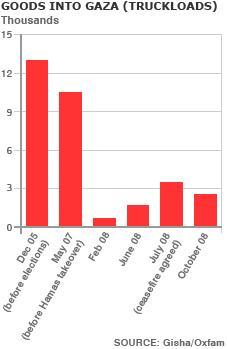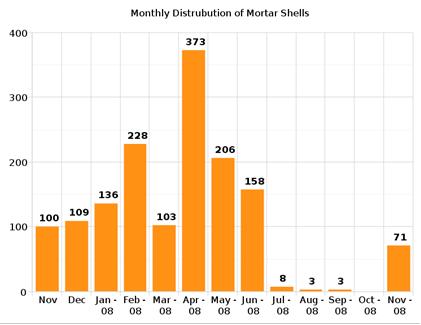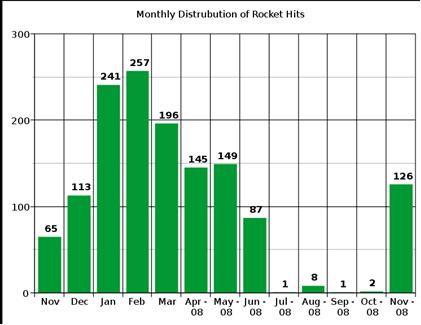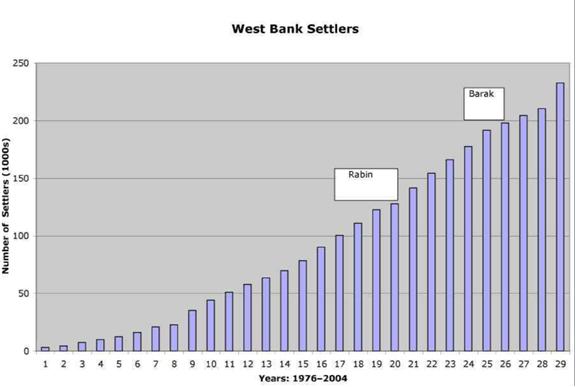Below we publish the text of a talk given by Mike Walker at a recent Workers Party public forum in Christchurch.
If we are to believe the hype true liberation and self determination for the Palestinian people will be forthcoming with what is commonly referred to as the “two state solution”. This supposed “solution” would leave the racist structures of the Israeli state in place and therefore the fundamental cause of the ‘conflict’ also in place. This proposal would confine Palestinians to less than twenty per cent of the land mandated by the British in 1947 and would leave the situation of Palestinians driven from their homes in what is now Israel unresolved. It would render invisible the alienated enclaves divided by checkpoints, barriers, the annexation wall and a brutal military occupation in the West Bank; combined with the Gaza strip, which has been called the largest concentration camp in the world. This represents the Palestinian Bantustan.
It is crucial as we look at the current situation in Palestine to keep in mind the “two state solution” and to contextualise the history with an emphasis on the history of Zionism and the conduct of Zionist leaders since the creation of the state of Israel.
Gaza “The World’s Largest Concentration Camp”
In August 2005 Israel withdrew its occupying forces from Gaza; which had been present since the 1967 six day war, and dismantled all Israeli Settlements. While the Israeli state no longer occupied Gaza it controlled the airspace, surrounding waters and all border crossings. Essentially, 1.5 million Palestinians were now trapped in a massive refugee camp.
The lack of any real advancement for Palestinian liberation by the ruling party (lead by Yasser Arafat) meant in January 2006 Hamas won 76 of 132 Parliamentary Seats in the Palestinian Parliamentary Elections giving them a clear majority over the incumbent Fatah party. This is described as a vote not so much for Islamist Fundamentalism but instead against the complicity of the current ruling regime and the lack of any progress for the Palestinians under the US lead “Peace Process”.
Since June 2007 when Hamas took control of the Gaza Strip Israel has imposed an economic blockade which the U.N has called “A human dignity crisis”. The purpose of the blockade was to collectively punish the inhabitants of Gaza for democratically electing Hamas. The blockade limits fuel imports including Petrol, Diesel, Power Plant Oil and cooking gas. This has meant Gaza’s’ sole power plant operates intermittently causing Palestinians to be without power for up to 16 hours a day within Gaza city. The lack of fuel also affects the ability to treat raw sewage. Gaza’s Sewage Body estimates that it releases 50-70 million litres of raw or poorly treated sewage into the sea daily.
This is causing significant damage to both the environment and marine life.
Water Pumping Stations are also affected by the lack of fuel. In May 2008 15% of people had access to water 4-6 hours a week, 25% had it every four days, and 60% had it every other day. By December 2008 people could expect to get access to water once a week for only a few short hours.
The Israeli regime imposes strict controls of the borders. Under this tyranny items that are not deemed ‘critical’ or of a humanitarian nature are prevented from entering Gaza. This has caused Gaza’s economy to collapse. Unemployment rates had risen to 50 percent by December 2008. Before the siege, up to 750 trucks of furniture, food products, textiles and agricultural produce left Gaza each month. This was worth half a million US dollars a day to the economy. Under the economic blockade nothing is allowed to be exported. By December 2007, 75,000 of Gaza’s 110,000 private sector workers had been laid off. By December 2008 only 23 of its 3,900 industrial enterprises remained open and functional. Approximately 40,000 permanent and temporary jobs have been lost in the fishing and agricultural sectors alone. Fishing has been impacted by a lack of spare parts and fuel, the IDF restrictions on access to the sea, and the degradation of marine life. While water shortages have meant that 70 percent of Agricultural land cannot be irrigated.
This siege and collective punishment of the people of Gaza continued until in July 2008 a ceasefire agreement between Israel and Hamas was reached. The agreement required that Hamas would stop firing rockets and mortars into Southern Israel. In return Israel would lift the economic blockade, providing much needed relief for Gaza’s 1.5 million people, and stop targeting Hamas with Military Operations.
So who the broke the ceasefire?
“The United States strongly condemns the repeated rocket and mortar attacks against Israel and holds Hamas responsible for breaking the cease-fire and for the renewal of violence in Gaza.” U.S. Secretary of State Condoleezza Rice. Dec 28 2008.
“Israel must defend itself. And Hamas must bear responsibility for ending a six-month cease-fire this month with a barrage of rocket attacks into Israeli territory.” (“War over Gaza” New York Times editorial, December 30, 2008)
In fact the ceasefire was broken by Israel on November the 4th 2008 when an air strike killed 5 militants and a civilian in Northern Gaza near the border with Egypt.
It is also important to remember that the terms of the ceasefire called for the easing of the economic blockade of Gaza. From July until November, 2008 when the ceasefire was broken, Israel continued to only allow humanitarian aid through the border crossings. The impact of the prohibitive barrier and correlation with Israeli retaliatory actions is clearly shown in the decline in imports.

Probably the most inhumane restriction relates to the constraint of the free movement of the people of Gaza and the number of permits issued for terminally ill people requiring urgent medical attention. In fact those permitted leave outside of Gaza actually dropped during the ceasefire.
The general public is led to believe that Hamas rocket attacks into Southern Israel continued unabated during the five and a half month ceasefire. The facts speak for themselves. One needs to go no further than the Zionist States Ministry of Foreign Affairs to rebut this argument. Their data clearly shows that during this period handheld rocket and mortar attacks on Southern Israel basically stopped.


Data obtained from the Israel Ministry for Foreign Affairs
The Popular Front for the Liberation of Palestine (PFLP) explains what the rockets represent to the Palestinian peoples:
“The rockets are both a practical and a symbolic representation of our resistance to the occupier. They are a constant reminder that the occupier is in fact an occupier, and that no matter how they may engage in sieges, massacres, fence us in, deny us the basic human needs of life, we will continue to resist and we will continue to hold fast to our fundamental rights, and we will not allow them to be destroyed. So long as one rocket is launched at the occupier, our people, our resistance and our cause is alive.
This is why they targeted the rockets – the rockets do make the occupier insecure, because every one is a symbol and a physical act of our rejection to their occupation, to their massacres, to their crimes, and to their continuing assaults on our people. Each rocket says that we will not allow their so-called “solutions” that are based on the abrogation and denial of our rights”.
On December 27; 2008, Israel, under false pretences, began one of the bloodiest attacks on Gaza since 1948. It started with air strikes moving quickly into a ground offensive with the stated goal of removing Hamas from power and stopping terrorist rocket attacks. Three weeks of Zionist Military siege using all the latest U.S supplied weaponry have left 1300 Palestinians dead and 5000 injured. During the siege the IDF targeted and killed civilians including those seeking refuge within U.N facilities that the IDF had the coordinates for:
“Where you have a direct hit on an UNRWA (United Nations Relief and Works agency) school where about 1,600 people had taken refuge, where the Israeli army knows the coordinates and knows who’s there, where this comes as the latest in a catalogue of direct and indirect attacks on UNRWA facilities, there have to be investigations to establish whether war crimes have been committed.” – Christopher Gunness, UNRWA spokesperson
On 17 January, a number of white phosphorous shells struck the yard of an UNRWA school in Beit Lahia, causing panic among the 1,600 civilians who had taken refuge there. While evacuating the shelter, an explosive shell struck the third floor of the school, killing two brothers, aged five and seven, and injuring 14 others including the boys’ mother. UNRWA has demanded an independent investigation into this incident.
This is no isolated accident. In total, more than 50 UN facilities have sustained damaged since 27 December.
The siege against the people of Gaza failed to remove Hamas from power and Israeli forces once again removed themselves from Gaza after causing massive damage to Palestinian essential resources and services.
The West Bank – “Siege of a Different Type”
While the world concentrates on the atrocities in Gaza the colonial land sieges and the building of the annexation wall continue in the West Bank. According to the Popular Front for the Liberation of Palestine:
“The West Bank is also under a state of siege of a different type – the siege of occupation, of 11,000 political prisoners, of constant land confiscation, the settlement building, the erection of the annexation wall, and the other ongoing crimes against our people. In fact, Israel is counting on the eyes of the world to be turned away from the West Bank due to its massacres in Gaza, in order to carry out yet more land confiscation and attacks in the West Bank.”
On the 9th of July 2004 the International Court of Justice issued an advisory opinion that the annexation wall was illegal and needed to be removed. That… “the Court finds that the construction by Israel of a wall in the Occupied Palestinian Territory and its associated régime are contrary to international law.”
Once completed, this wall will run 725 kilometers; more than double the length of the 1949 Armistice (Green Line), with 86% located inside the West Bank (including East Jerusalem). The Barrier will isolate approximately 9.5% of West Bank territory, including East Jerusalem and No-Man’s Land. Approximately 385,000 settlers in 80 settlements will be located between the Barrier and the Green Line.
Approximately 35,000 West Bank Palestinians will be located between the Barrier and the Green Line. Approximately 125,000 Palestinians in 28 communities will be surrounded on three sides by the Barrier. Approximately, 26,000 Palestinians in eight communities will be surrounded on four sides by the Barrier, with a tunnel or road connection to the rest of the West Bank.
The Barrier compounds the fragmentation of the West Bank by creating non-contiguous enclaves of Palestinian communities and territory. They are isolated from each other and from the remainder of the West Bank. Movement and access for Palestinians is controlled by permits and gates. These physical and bureaucratic measures add to the closure regime of checkpoints and roadblocks, preventing and delaying Palestinians from accessing essential services and workplaces.
“A far greater number of Palestinians who reside to the east of the Barrier have been isolated from farms, grazing lands and water resources located on the west side. In the northern West Bank, these Palestinians need ‘visitor’ permits to cross the Barrier to reach their farms and wells located in the closed area. According to a UNOCHA-UNRWA Barrier Monitoring survey, less than 20 percent of those who used to farm their lands in these areas before completion of the Barrier are now granted permits.9 Even if granted, permits are not always issued to the most appropriate person, leaving older family members unable to effectively carry out the work, while the more able-bodied remain idle at home. For the minority granted permits, access is through a limited number of designated gates. Along the total length of the Barrier, there are 64 gates currently open on a daily, weekly and/or seasonal basis. The irregular placement of the gates and the restrictive opening times severely curtail the time available for farming with negative impact on rural livelihoods” – OCHA Special Focus: ‘Occupied Palestinian territory. The barrier gate and permit regime four years on’.-Humanitarian impact in the Northern West Bank
The wall protects illegal Israeli Settlements and precious water resources inside the West Bank. People often discuss its’ purpose as being “security” for Israel. It is seldom referred to as providing security for illegal Israeli settlements in Palestinian territory and apartheid style settler only roads.
Since 1967 Israel has built 120 settlements in the West Bank and 12 settlements in East Jerusalem. In addition to this they have also constructed 100 “outposts”. These inherently racist settlements enjoy protection from the Israeli military, funding from Israeli nationals and special treatment from Israeli authorities. Israeli only benefits include roads, utilities and schools for the exclusive use of settlers. Israel has continually pledged to cease settlement activity at different times during the “peace process” but has never actioned this promise. Settlement in the West Bank has continued unabated with the full support of the Zionist State. In 1996 the total number of settlers was 139, 974. A steady increase every year meant that by the end of 2006 this number was 261,879. Between December 2007 and July 2008 over 1000 new buildings consisting of over 2500 apartment type dwellings where built in the settlements.

U.S Imperialism and the War machine
The war on Gaza and the continuing occupation of the West Bank is made possible through the full support of Western Imperialist powers especially the United States.
Some believe that this will alter with the newly elected Barack Obama. So will the election of Barack Obama to the office of president change anything at all? While it is hard to predict what his administrations policy’s direction will take in relation to the Middle East we can have a look at what he and prominent members of his team have been saying in the lead up to and post his election to office.
Fresh from winning the Democratic nomination Barack addressed AIPAC, a major Zionist lobby group, and advised that Jerusalem should be Israel’s undivided capital. Stating that Israel is “our strongest ally in the region and its only established democracy,” He assured his audience that “we must preserve our total commitment to our unique defense relationship with Israel by fully funding military assistance and continuing work on the Arrow and related missile defense programs.” These advanced missile systems would help Israel “deter missile attacks from as far as Tehran and as close as Gaza.” Obama also opposed the idea of a Palestinian unity government that included the democratically elected Hamas maintaining that “we must maintain the isolation of Hamas”.
The newly appointed Secretary of State Hilary Clinton said recently in her first address to congress: “We must also actively pursue a strategy of smart power in the Middle East that addresses the security needs of Israel” ,she continued: “the President-elect and I understand and are deeply sympathetic to Israel’s desire to defend itself under the current conditions, and to be free of shelling by Hamas rockets.”
On Face the Nation, Obamas’ senior adviser David Axelrod explained how an Obama administration would handle the situation: “Well, certainly, the president-elect recognizes the special relationship between United States and Israel. It’s an important bond, an important relationship. He’s going to honor it … And obviously, this situation has become even more complicated in the last couple of days and weeks. As Hamas began its shelling, Israel responded. But it’s something that he’s committed to.”
When asked how he would solve the Israel/Palestine conflict Vice President Joe Biden responded: “No one in the Senate has been a better friend to Israel than Joe Biden. I would have never joined this ticket were I not absolutely sure Barack Obama shared my passion.”
The common themes of past US Imperialist leaders continue to come through in relation to the Palestinian question with this new administration. The rhetoric of the meager Israeli state having to defend itself from unprovoked rocket attacks from Palestinian terrorists continues unabated.
It is obvious that the region is of vital strategic importance to the United States and Israel plays an important part in the grand imperialist plan. Israel is the single largest recipient of American foreign aid, receiving $3 billion in grants annually since 1985. Interestingly this used to be divided between economic and military aid. With Israel becoming economically self sufficient the former president Benjamin Netanyahu addressed congress in 1996 and advised that economic aid could be phased out. In 1998 Israel proposed that the $1.2 Billion in economic aid annually could be gradually eliminated and added to the $1.8 Billion in military aid received annually.
This military aid has helped Israel to build one of the most technologically advanced militaries in the world and unlike all other countries that receive military aid Israel is allowed by the U.S to spend a portion (up to 26%) on procurement from Israeli defense companies. This has helped them to become one of the top ten arms suppliers worldwide and enabled them to supply arms to groups that the U.S has been unable to due to domestic pressure. Chomsky refers to Israel as Americas’ mercenary state and relates this to their clandestine role for the U.S in Africa, Guatemala and South America. It is quite ironic that the state supposedly providing the ‘roadmaps for peace’ is the same state providing the military equipment and funding for the occupation of the West Bank and the siege against Gaza.
Two State Solution NO Resolution!
After contextualising the history and examining the current situation it becomes obvious that the state of Israel is the partial realisation of the Zionist dream of a Jewish homeland in the ancient Kingdom’s of Samaria and Judea. As the world looks on a slow campaign of ethnic cleansing and colonisation is turning the proposed Palestinian State into a Bantustan – a country or region that lacks any real legitimacy or power, consists of several unconnected enclaves, and emerges from international political maneuvering.
There is only one solution; Palestinian Military and Political Unity in resistance against the occupation, as outlined in the National Conciliation Document of the Palestinian Prisoners in May 2006, with the goal being the eventual disbandment of the Israeli state. In its place 1 secular democratic state where Arabs and Jews have equal rights and all Palestinian refugees are given the right to return to their land.
